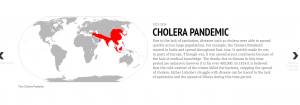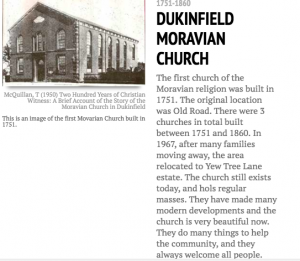As we learned about visualization tools in the previous units and compiled Moravian entries, it became apparent to me that the mode of representation directly affects the way in which people learn about ideas. If information is presented through text, it encourages the reader to read closely and look for specific details compared to images which give the reader visual aid to understand an idea. Timelines give both text and images to show chronology and geography which teach the reader when and where events happened and what they looked like. For example, in the Latrobe timeline, there are slides about education and sanitation practices that explain the cultural context for the 1800’s in Europe where Esther Latrobe wrote her memoirs.

Chronology and geography clarify historical events when they are not biased or centered around one specific event because history cannot be objective in that case. For example, a timeline centered around Jesus’ life would most likely not include events like evolution and thus would not be informative to those looking for the scientific theories. Grafton says chronology “was the key to many practical matters such as knowing when to celebrate Easter” (11). Timelines not only record chronological events but also tell stories through the text and images of each event. In fact, Grafton states, “While history dealt in stories, chronology dealt in facts” (10). It is chronology that is credible and shapes historical stories. He uses annals as an example by saying although they do not explain cause and effect, the ways events recorded “represent a form closely calibrated to both the interests and the vision of their users” (12). He explains how Annals of St. Gall was written in the Middle Ages when violence was prominent and thus the events were recorded in a passive tone because the events were said to have happened to people instead of people going through such events. That annal informs the reader of not only the events but the context for how people thought in that time period. Thus, timelines give contextual details like the time and location but also insight as to how people’s thoughts developed.


 For example, we knew that Harriet Lees suffered from lung inflammation and was constantly ill, but we did not realize that her illness was a part of the larger tuberculosis outbreak that was going on in Great Britain.
For example, we knew that Harriet Lees suffered from lung inflammation and was constantly ill, but we did not realize that her illness was a part of the larger tuberculosis outbreak that was going on in Great Britain.


